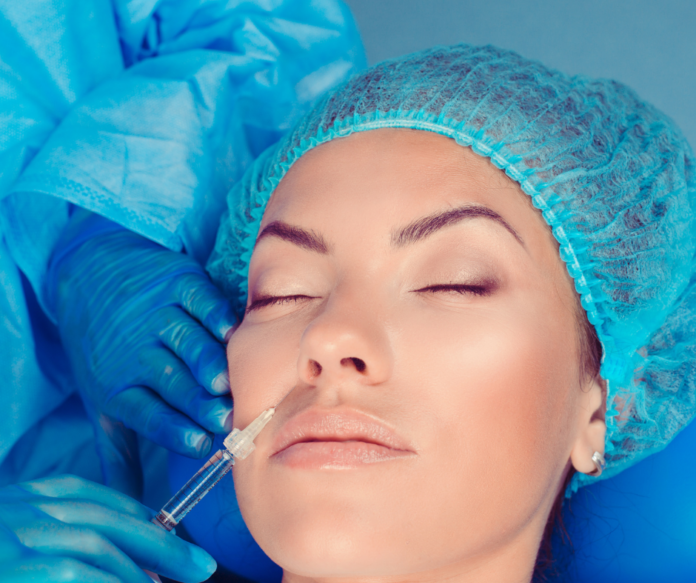
Addressing Complications from Dermal Fillers: A Comprehensive Guide
Introduction to Dermal Fillers and Their Complications
Dermal fillers have become increasingly popular in recent years as a non-surgical option for facial rejuvenation and enhancement. These injectable treatments can help to smooth out wrinkles, restore lost volume, and create a more youthful appearance. However, as with any medical procedure, there are potential risks and complications associated with dermal fillers. In this comprehensive guide, we will address the most common complications and provide specific answers and solutions to help you make informed decisions about your medspa services.
Common Complications from Dermal Fillers
While dermal fillers are generally considered safe and effective, complications can occur. Some of the most common complications include:
1. Bruising and swelling
2. Infection
3. Allergic reactions
4. Nodules and granulomas
5. Vascular occlusion
6. Migration of the filler
Bruising and Swelling
Bruising and swelling are common side effects of dermal filler injections. These issues typically resolve on their own within a few days to a week. To minimize the risk of bruising and swelling, follow these tips:
– Choose a skilled and experienced injector
– Avoid blood-thinning medications and supplements before your appointment
– Apply ice to the treated area immediately after the procedure
– Keep your head elevated for the first 24 hours after treatment
If bruising and swelling persist or worsen, consult your healthcare provider for further evaluation and treatment.
Infection
Infection is a rare but serious complication of dermal filler injections. To reduce the risk of infection, ensure that your injector follows proper sterile techniques and that the treatment area is thoroughly cleaned before the procedure. Signs of infection may include:
– Increased pain, redness, and swelling
– Warmth at the injection site
– Pus or discharge
– Fever
If you suspect an infection, contact your healthcare provider immediately. They may prescribe antibiotics or other treatments to address the infection.
Allergic Reactions
Allergic reactions to dermal fillers are uncommon but can occur. Symptoms of an allergic reaction may include:
– Redness, itching, and swelling at the injection site
– Hives or rash
– Difficulty breathing
– Swelling of the face, lips, or tongue
If you experience any of these symptoms, seek immediate medical attention. Treatment for an allergic reaction may include antihistamines, corticosteroids, or epinephrine, depending on the severity of the reaction.
Nodules and Granulomas
Nodules and granulomas are small, firm lumps that can form under the skin after dermal filler injections. These complications are more common with certain types of fillers, such as those containing poly-L-lactic acid or calcium hydroxylapatite. Treatment options for nodules and granulomas may include:
– Massage to break up the lump
– Injections of corticosteroids to reduce inflammation
– Hyaluronidase injections to dissolve hyaluronic acid-based fillers
– Surgical removal in severe cases
Consult your healthcare provider if you notice any lumps or bumps after your dermal filler treatment.
Vascular Occlusion
Vascular occlusion is a rare but serious complication that occurs when a dermal filler is accidentally injected into a blood vessel, blocking blood flow to the surrounding tissue. This can lead to tissue death (necrosis) and, in severe cases, blindness. Signs of vascular occlusion may include:
– Severe pain at the injection site
– Bluish discoloration of the skin
– Blistering or skin breakdown
If you suspect a vascular occlusion, seek immediate medical attention. Treatment may include injections of hyaluronidase to dissolve the filler, blood-thinning medications, or other interventions to restore blood flow.
Migration of the Filler
In some cases, dermal fillers can migrate from the original injection site, causing unwanted changes in appearance. This complication is more common with certain types of fillers and injection techniques. To minimize the risk of filler migration, choose a skilled and experienced injector and follow their post-treatment care instructions. If you notice any changes in your appearance that suggest filler migration, consult your healthcare provider for evaluation and possible treatment options.
Summary: How to address complications from dermal fillers?
Dermal fillers can be an effective way to rejuvenate and enhance your appearance, but it’s essential to be aware of the potential complications and how to address them. By choosing a skilled and experienced injector, following pre- and post-treatment care instructions, and being vigilant for signs of complications, you can minimize your risk and enjoy the benefits of your medspa services. If you have any concerns or questions about dermal fillers, consult your healthcare provider or a qualified medical professional for guidance.
Related Articles: Risks associated with dermal filler injections



